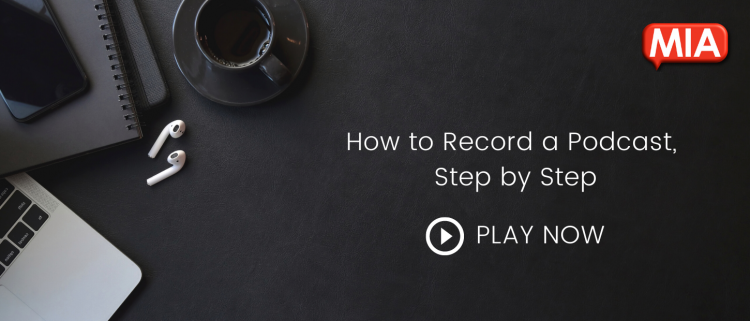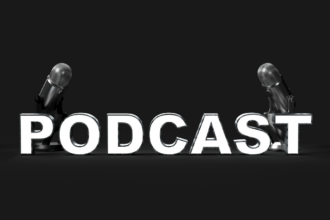Podcasting has grown in popularity over the last decade. 1 in 5 Americans ages 12 and up say they have listened to at least one podcast in the last month. This means that podcasting is now popular enough that if you’re serious about making one, it’s time to start investing some time into researching how to do it well. Here are some pointers on how to record a podcast.
What are the Basics of Podcasting?
If you want to know how to make a podcast, the first step is understanding what it is. Podcasts are essentially audio files that people can subscribe to or download to their phones, tablet, or computer. It’s like taking an audio blog and turning it into a tangible file that people receive through email or just by clicking on a link.
A lot of podcasts are interviews with experts or celebrities about various topics. Some podcasts are live recordings of events while others just go over information in audio form.
If you’re new to podcasting, there are two different modes for recording your podcast: live or pre-recorded. Live recordings are done in real-time so listeners can hear how things were said in response to something else. Pre-recorded shows are more traditional and do not have the audience present while they’re being recorded. The biggest difference between these two styles is the editing process which you’ll learn further down in time.
What Do You Need to Get Started?
Here are the essentials for recording a podcast, step by step.
1. First, you’ll need an idea for your show. This may seem like the most important step, but it’s actually one of the easiest. Podcasts can cover any topic under the sun – entertainment, sports, business, politics, pets – anything! So what are you passionate about? What do you have expertise in? What topics are your friends constantly asking you about? Consider these questions when developing your show topic.
2. Next to that topic or theme, brainstorm three main topics that will be covered in each episode. You’ll eventually want to produce 10 to 20 episodes so you’ll want to have at least 30 minutes of content per episode.
3. Choose a name for your podcast and design a logo to match it! You can use free programs like Canva or Adobe Spark to do this without any design experience required.
4. If there are other people who will be on the podcast with you (e.g., co-hosts), arrange a time when everyone is available to record together in person or via phone call or video chat programs like Skype or FaceTime.
5. You’ll also need recording equipment – microphones for voiceovers and interviews work well if you don’t already have them handy – and editing software like Audacity or Logic Pro X if your computer can run them smoothly enough – which come with all sorts of different price tags depending on the quality level needed for.
Now that we have our equipment ready, the next step would be to record and edit your audio.
How to Record and Edit Your Audio?
Before you even think about recording, you need to invest in a good microphone. It’s tempting to just use the built-in mic on your laptop, but this is not the best option. If you’re serious about making your podcast sound good, invest in a high-quality microphone that will help with the clarity of the recording.
Once you have a good mic, it’s time to start editing. You’ll want to edit out any parts of the podcast where there are long pauses or dead air, as this will make your podcast feel patchy and incomplete. Editing can be done using software like Audacity and Adobe Audition; however, these tools do require some technical knowledge if you don’t want to mess up your recording too much.
If you’re not confident with these types of software programs, there are also online tools like Auphonic and Podigee that can help with editing and uploading your final product for free. This makes it easier for those who aren’t as tech-savvy to create podcasts without having to worry about investing too much money into expensive software programs before they know if they’ll enjoy recording their own show or not!
Monetizing Your Show
Podcasting is a great way for you to promote and grow your business. And just like any other medium, there are ways to monetize your show.
The first way is by advertising. Many podcasts include commercial messages from sponsors at the beginning or end of their episodes. But if you’re not interested in advertising, you could still make money from your podcast by creating a Patreon account.
Patreon is a site where fans can pledge monthly payments to support their favourite content creators, like podcasters. Some people who have created successful podcasts have made over six figures through their Patreon accounts. It’s also possible to become a YouTube partner and monetize your videos that way as well, which is another avenue for monetizing a podcast show that doesn’t involve advertising or crowdfunding.
Have you ever wanted to start your own podcast?
Here are four steps to get you started with your own show and make it successful.
1. Determine what you want to talk about
2. Find your audience
3. Choose a platform
4. Create your show
So what are you waiting for? Get started right away! Go and Create your Podcast! And let your Voice be Heard!

















